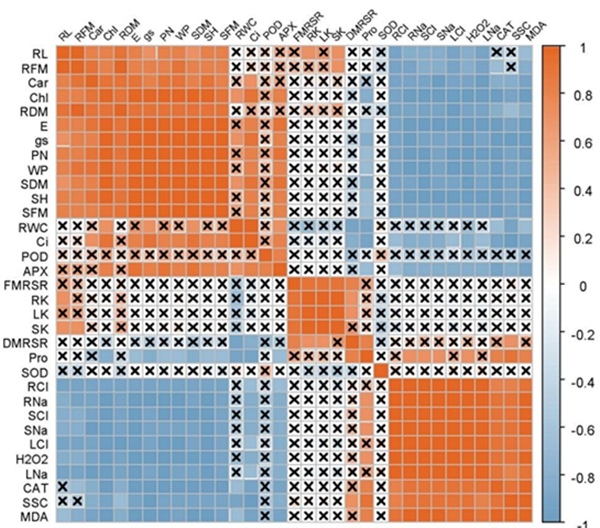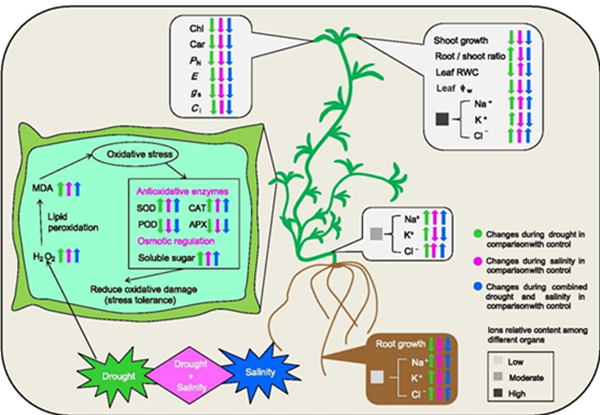Study: Long-term Exposure to Salinity, Drought and Combined Stresses Had Negative Effects on Halophyte Halogeton glomeratus
2021-11-04
An international team led by researchers from the Xinjiang Institute of Ecology and Geography of the Chinese Academy of Sciences had found that long-term exposure to salinity, drought and combined stresses had negative effects on halophyte Halogeton glomeratus.
The findings were published in Physiologia Plantarum on 9 October 2021, entitled "Negative effects of long-term exposure to salinity, drought and combined stresses on halophyte Halogeton glomeratus".
Soil salinity and drought are regarded as the most critical and adverse environmental factors for plants, leading to enormous losses in agricultural production worldwide and definitely influencing the distribution of wild species. Recent reports have suggested that the cultivation of halophytes can efficiently reduce soil salinity and is an effective way to reclaim saline soils in arid and semi-arid lands. Therefore, to have a successful phytoremediation of saline soils in arid and semi-arid lands, a detailed study of the mechanisms adopted by halophytes in the adaptation to drought and salt stresses is a high priority.
In this study, the halophyte Halogeton glomeratus was grown under control, single or combinations of 60 d drought and salt treatments, and morphophysiological responses were tested.
Our results showed that drought, salinity and combination of these two stressors decreased plant growth, leaf photosynthetic pigments content, gas exchange parameters and water potential (ψw), and the decreases were more prominent under combined drought and salinity treatment compared with these two stressors individually performed. Similarly, combined drought and salinity treatment induced more severe oxidative stress as indicated by more hydrogen peroxide (H2O2) and malondialdehyde (MDA) accumulated. Nevertheless, H. glomeratus is equipped with specific mechanisms to protect itself against drought and salt stresses, including up-regulation of superoxide dismutases (SOD) and catalase (CAT) activities and accumulation of osmoprotectants (Na+, Cl– and soluble sugar).
The results indicated that photosynthetic pigments content, gas exchange parameters, water potential, APX activity, CAT activity, soluble sugar, H2O2 and MDA are valuable screening criteria for drought and salt, alone or combined, and provide the tolerant assessment of H. glomeratus.
Article link: https://onlinelibrary.wiley.com/doi/10.1111/ppl.13581

Fig. 1 Correlation matrix among various morphophysiological parameters of H. glomeratus subjected to drought, salinity and combined stresses.

Fig. 2 Schematic diagram showing the changes of morphophysiological parameters in response to drought, salinity and combined stresses in H. glomeratus.
Contact: LIU Jie, Xinjiang Institute of Ecology and Geography
E-mail: liujie@ms.xjb.ac.cn



